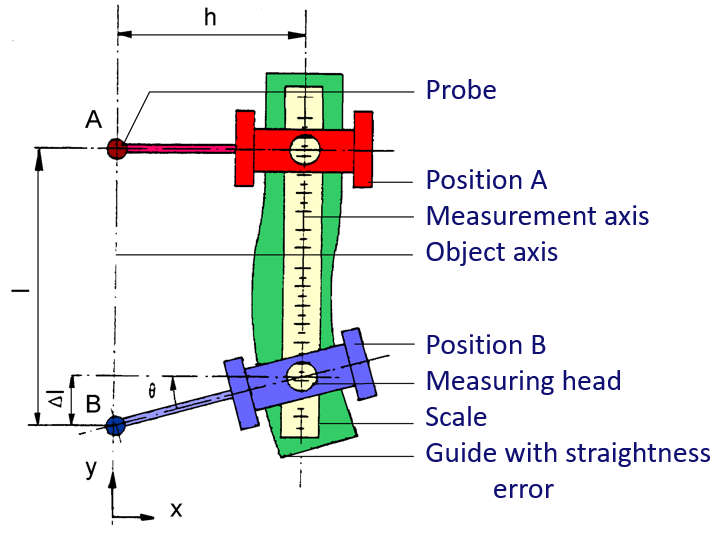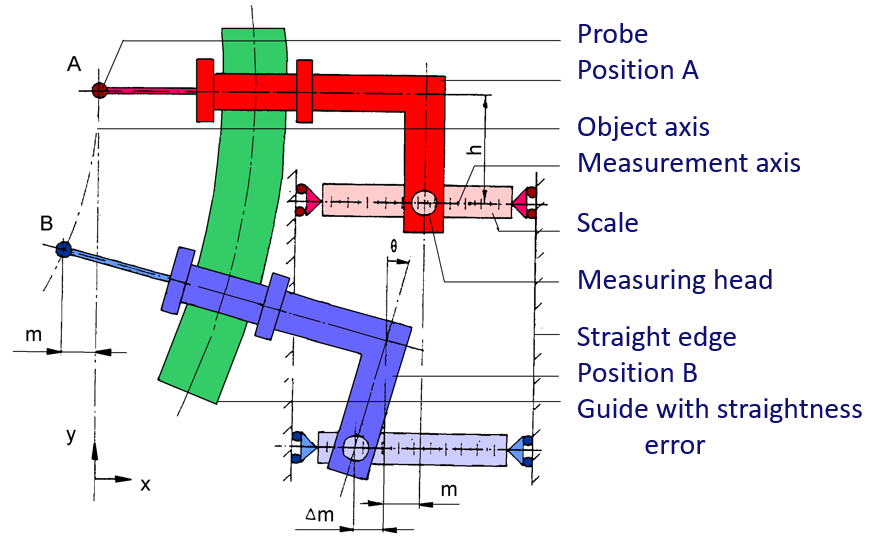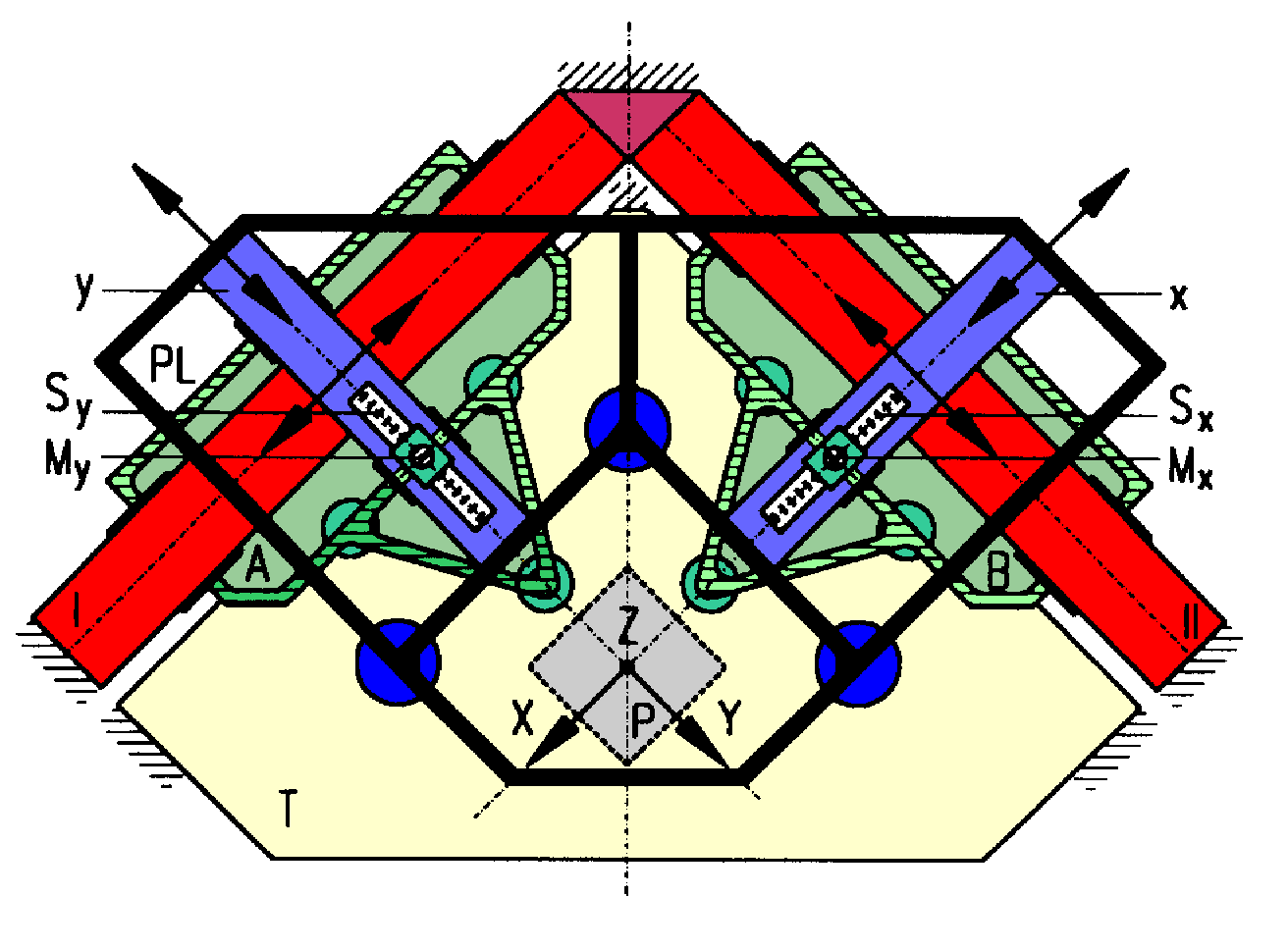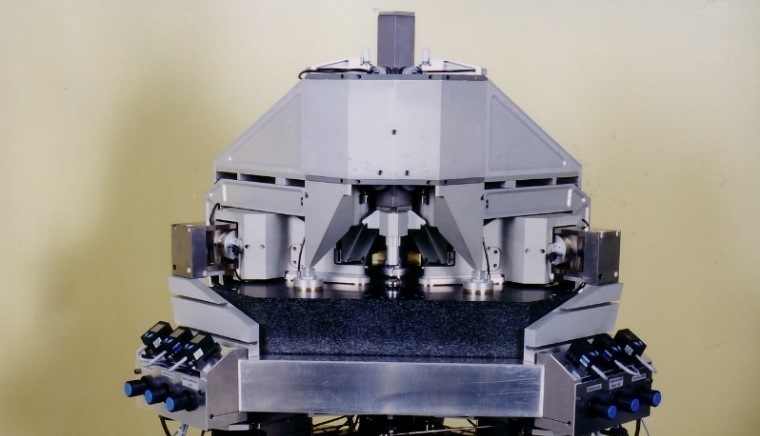High-precision 3D coordinate measuring machine according to Abbe and Bryan principle
In Precision Engineering components are getting smaller and tolerances become tighter, so demands for accuracy are increasing. To improve the precision of Coordinate Measuring Machines (CMMs) an alternative high precision 3D-CMM was developed with measuring uncertainty beneath 0.1 μm in a measurement volume of 1 dm3. The machine design is based on the Abbe and Bryan principle, thus smaller measuring errors are feasible with less effort on software compensation. Application of a light and stiff construction, compensated air bearings and well-positioned linear motors result in high stiffness and favorable dynamic behavior. A statically determined design, extensive use of aluminum and mechanical thermal length compensation make the machine less sensitive to temperature changes. To prevent mechanical disturbances an active vibration isolation system was designed.
Description
Conventional large CMMs have good accessibility but relatively large measurement uncertainty due to large Abbe-offsets, scaling down is preferred. Measurement uncertainty U3 scales with the dimensions of the CMM according to U3 = 0.7 + L/600 [μm] (L in [mm]), so scaling down is preferred for a large class of small products to be measured. A new concept was conceived based on both the Abbe and Bryan principle (see Figure 1 and 2), as a result of which, only 13 out of 21 error contributions remain. Closed box structures are used for the moving platform that are made out of aluminum. In addition to high specific stiffness, low density, and relatively low cost, aluminum has fast thermal response, i.e. high volumetric thermal diffusivity λ⁄ ρCp [m2/s], which expresses the response time towards quasi-static deformation from heat load. Based on the first prototype developed at TU/e, Carl Zeiss has developed the F25 series product with a measuring uncertainty of 250 nm at a resolution of 7.5 nm.
Application:
High-precision coordinate measurement machine (CMM)
Realized:
Prototype CMM, which was further developed into a series product F25 by Carl Zeiss.
Principle:
Abbe and Bryan principle, closed box design, high volumetric diffusivity through application of aluminum
Development
Marc Vermeulen, TU/e (1999)
References
[1] Vermeulen, M.M.P.A., High-precision 3D-coordinate measuring machine, PhD Thesis, Eindhoven University of Technology, September 28, 1999.
[2] Schellekens, P., et al, Design for precision: Current status and trends, Annals of the CIRP, Vol. 47/2, 1998.
[3] Vermeulen, M.M.P.A., Rosielle, P.C.J.N., Schellekens, P.H.J., Design of a High-precision 3D-Coordinate Measuring Machine, Annals of the CIRP, Vol. 47/1, pp. 447-450, 1998.



